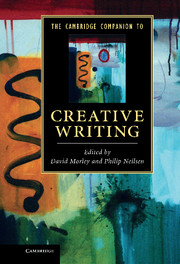Book contents
- Frontmatter
- 1 Introduction
- PART I GENRES AND TYPES
- 2 A writing lesson: the three flat tyres and the outer story
- 3 In conversation: a new approach to teaching long fiction
- 4 Genre and speculative fiction
- 5 Writing drama
- 6 Poetics and poetry
- 7 Travel writing
- 8 Creative writing and new media
- 9 Creative translation
- 10 Life writing
- PART II TOPICS
- Further reading
- Other titles in this series
- Index
9 - Creative translation
from PART I - GENRES AND TYPES
Published online by Cambridge University Press: 28 March 2012
- Frontmatter
- 1 Introduction
- PART I GENRES AND TYPES
- 2 A writing lesson: the three flat tyres and the outer story
- 3 In conversation: a new approach to teaching long fiction
- 4 Genre and speculative fiction
- 5 Writing drama
- 6 Poetics and poetry
- 7 Travel writing
- 8 Creative writing and new media
- 9 Creative translation
- 10 Life writing
- PART II TOPICS
- Further reading
- Other titles in this series
- Index
Summary
Why Bottom, thou art translated!
- William Shakespeare, A Midsummer Night’s Dream
Why should the emerging creative writer bother with translation? Or to put it another way, why is translation ‘creative’? Surely it simply repeats what's already been written by someone else: reproducing their ideas, their imagery and insight in a way that's almost mechanical? And moreover, wouldn't one need to be an accomplished linguist to do this?
Many writers in English avoid translation because of their assumptions about what's involved. Literary translation forces us to shift our literary worldview a little – and that, of course, is one of its benefits. British schools still teach a curriculum that can make it seem as if English Literature and literature itself are synonyms. I remember how the public library where I got my real literary education reinforced this impression: lined with English-language novels, it had a single set of shelves for foreign literature. I was into my teens before I stopped believing that ‘literature’ was one of those things, like cricket, that Britain did well but many other countries not at all. Ridiculous, yes. Yet while today's emerging writer may be more widely travelled than ever before, he or she often has no sense of entering a particular tradition within the world context. Quite aside from social or existential consequences, this matters creatively.
For having some sense of what's going on among your peers in the rest of the world not only opens up a world of creative alternatives: paradoxically, it can also serve to throw your own literary tradition into sharper relief. Seeing what other ways of writing do is a way of seeing what your own practice leaves out. It helps focus creative choices, especially those to do with register and form.
- Type
- Chapter
- Information
- The Cambridge Companion to Creative Writing , pp. 118 - 132Publisher: Cambridge University PressPrint publication year: 2012
- 1
- Cited by

